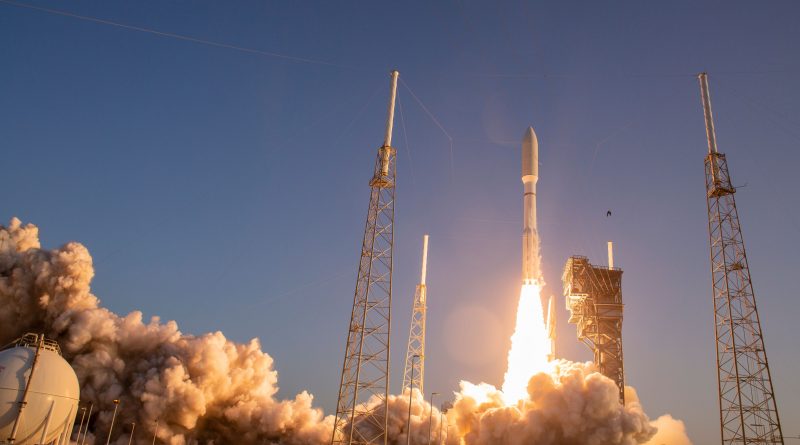Muscly Atlas V Rumbles off from Florida on Direct Geostationary Delivery with CBAS & EAGLE
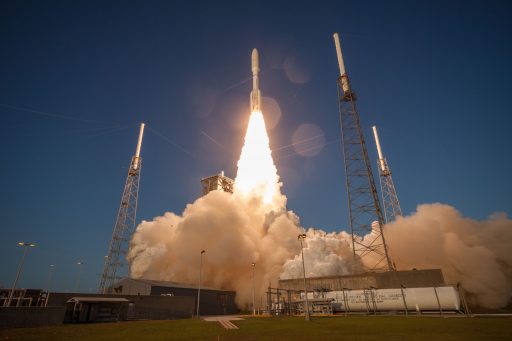
The most powerful version of ULA’s Atlas V rocket – sporting five Solid Rocket Boosters for maximum thrust off the pad – soared into sunset on Saturday after blasting off from Florida’s Cape Canaveral with a pair of U.S. Air Force Satellites. Riding under the five-meter fairing of the climbing rocket was a very different pair comprising a secretive military communications satellite going by the name of CBAS and an experimental platform called EAGLE, setting out to demonstrate cutting-edge technology for the collection of space surveillance data.
Atlas V leapt off its Cape Canaveral Air Force Station launch pad at 23:13 UTC on Saturday, 7:13 p.m. local time. Flying in its 551 configuration for the eighth time, Atlas V departed the Space Coast in a hurry – accelerating beyond the speed of sound in just 35 seconds, shedding the five boosters before the T+2 minute mark and dropping its Swiss-made payload fairing into the Atlantic at the three-and-a-half minute mark. Another minute later, the job of the RD-180-powered first stage was done and the Centaur upper stage assumed control for an all-night ascent mission.
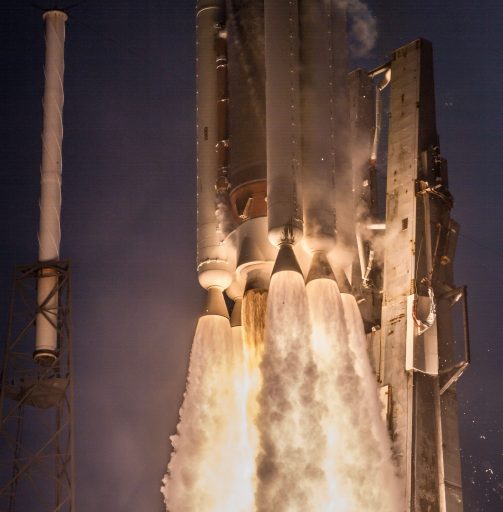
CBAS and EAGLE are booked for a direct flight to Geostationary Drift Orbit – creating a complex mission with a duration of nearly seven hours and requiring three main engine burns by the trusted Centaur upper stage, conducting its 248th mission on Saturday.
Centaur’s first two burns successfully lifted the vehicle into a Parking Orbit and then into an elliptical transfer orbit before the upper stage settled down for a five-hour coast phase to the peak of the egg-shaped orbit. The critical circularization burn was planned at 4:47 UTC on Sunday and the two payloads were to be on their way by 6:10 UTC, though the exact timing of their release was withheld from the public due to the semi-secret nature of the mission.
Mission Success was confirmed around 6:20 UTC on Sunday after both satellites were separated from the Centaur upper stage. The Air Force Space Missiles Systems Center also confirmed the successful outcome of the mission.
Saturday’s mission was only known by its Air Force Space Command number – AFSPC-11 – when showing up on launch manifests and the identity its payloads was kept under wraps until shortly before launch, though the use of an Atlas V 551 rocket piqued the interest of outside observers as one of the most powerful U.S. launch vehicles currently in operation.
Enlisting the help of five SRBs, Atlas V 551 is usually called up when heavy lifting or high-energy deliveries are required. Its previous assignments were sending the New Horizons and Juno probes off to explore Pluto and Jupiter and to lift the U.S. Navy’s MUOS fleet which rank among the heaviest communications satellites currently in operation.
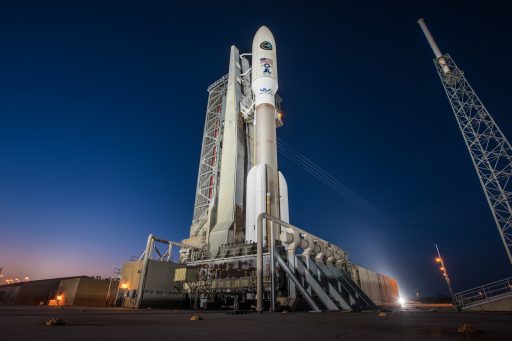
The task of AV-079 – the 77th Atlas V – was a direct-to-GEO delivery of two sizeable payloads – CBAS, the Continuous Broadcast Augmenting SATCOM, riding in the top position and EAGLE, the ESPA Augmented Geostationary Laboratory Experiment, installed between CBAS and the Centaur upper stage. The presence of EAGLE on the AFSPC-11 mission had been rumored for some time but the identity of CBAS as top passenger was only revealed on April 6 with just over a week to liftoff.
In the announcement of CBAS as one of this mission’s payloads, the U.S. Air Force said the satellite is designed for communications relay capabilities to support senior leaders and combatant commanders in an augmenting function to existing military satellite communications (milsatcom) capabilities. The satellite will offer a combination of functions: serving as a relay point for military communications and delivering continuous military data broadcasting.
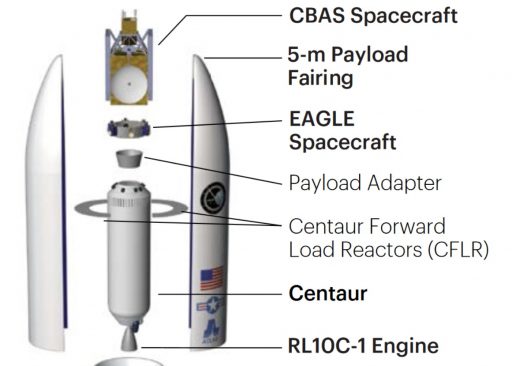
Specifics like who built the satellite and in which frequency bands it operates were not disclosed in the run-up to Saturday’s launch. CBAS likely weighs between 1,960 and 3,100 Kilograms based on the known direct-to-GEO performance of the Atlas V 551 and the mass range for EAGLE.
The U.S. Air Force Military Satellite Communications Directorate currently operates two major communications architectures in Geostationary Orbit. The Wideband Global Satcom (WGS) System, currently operating nine satellites, serves as the backbone of military communications by delivering open and encrypted X- and Ka-Band links for a wide variety of applications from remote-controlling of UAVs to voice communications with individual soldiers. AEHF, the Advanced Extremely High Frequency Satellites, provide secure and high-capacity communications to remote and handheld terminals to serve warfighters during all levels of conflict.
Where CBAS will fit into the picture remains to be seen and will likely hinge on the skills of amateur satellite trackers as mission details like operational location in Geostationary Orbit are unlikely to be made public by the Air Force.
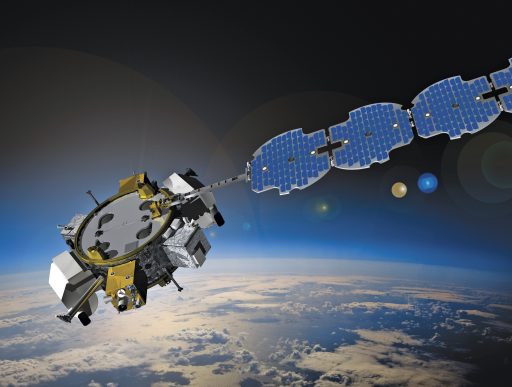
Somewhat more is known about EAGLE, riding into orbit affixed between Centaur and CBAS as the first flight of Orbital ATK’s ESPAStar platform. Taking an ESPA payload adapter as a basis, Orbital ATK added provisions for power generation, propulsion, attitude control and data handling which can be shared by the payloads installed around the ESPA ring. These can either be separable satellites taking advantage of the craft’s precise injection capabilities or these can also be hosted payloads sharing the ESPAStar platform for maneuvering, pointing and data downlink for the duration of their mission.
EAGLE – to best public knowledge – carries at least one separable satellite, designated Mycroft, and four attached payloads primarily geared toward the exploration of Space Situational Awareness (SSA) and threat-detection technology. SSA has been a particular focus area in recent years as a number of countries have been actively pursuing missions capable of gathering information on the satellites of others, some with the potential of manipulating another nation’s space assets.
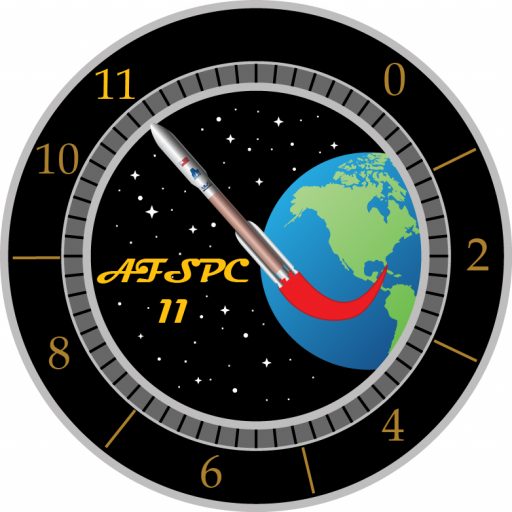
One particular technology demonstration on EAGLE that may build the foundation for future SSA missions is an Inverse Synthetic Aperture Ladar – combining synthetic aperture technology from radar missions with laser-based imaging from LIDAR sensors to obtain an ability of collecting highly resolved images of a resident space object beyond the optical capabilities of a conventional telescope. EAGLE also hosts a Hypertemporal Imaging Space Experiment that aims to demonstrate the use of blending imagery of a target obtained in various wavelength bands over regular time intervals to extract a maximum of information on the properties of that target – useful for intelligence-gathering of Earth- and space-based targets.
Two other attached payloads riding on EAGLE will demonstrate a small package measuring space weather parameters to assist in fault attribution and recovery while an Air Force Research Lab satellite platform demonstration will test out systems for a future resilient satellite.
Mycroft, weighing in at no more than 130 Kilograms, is understood to be a follow-on mission to the ANGELS demonstration that ran from 2014 to 2017 and used a small maneuverable satellite to test out uncooperative rendezvous systems, navigation algorithms and ‘inspection’ sensors to aid SSA efforts. According to the Air Force, Mycroft will separate from EAGLE at some undisclosed time in the mission, retreat to a distance of 35 Kilometers and then re-rendezvous with its parent spacecraft to test out different rendezvous sensors and processing systems as well as an imaging platform for collecting data on other satellites in orbit.
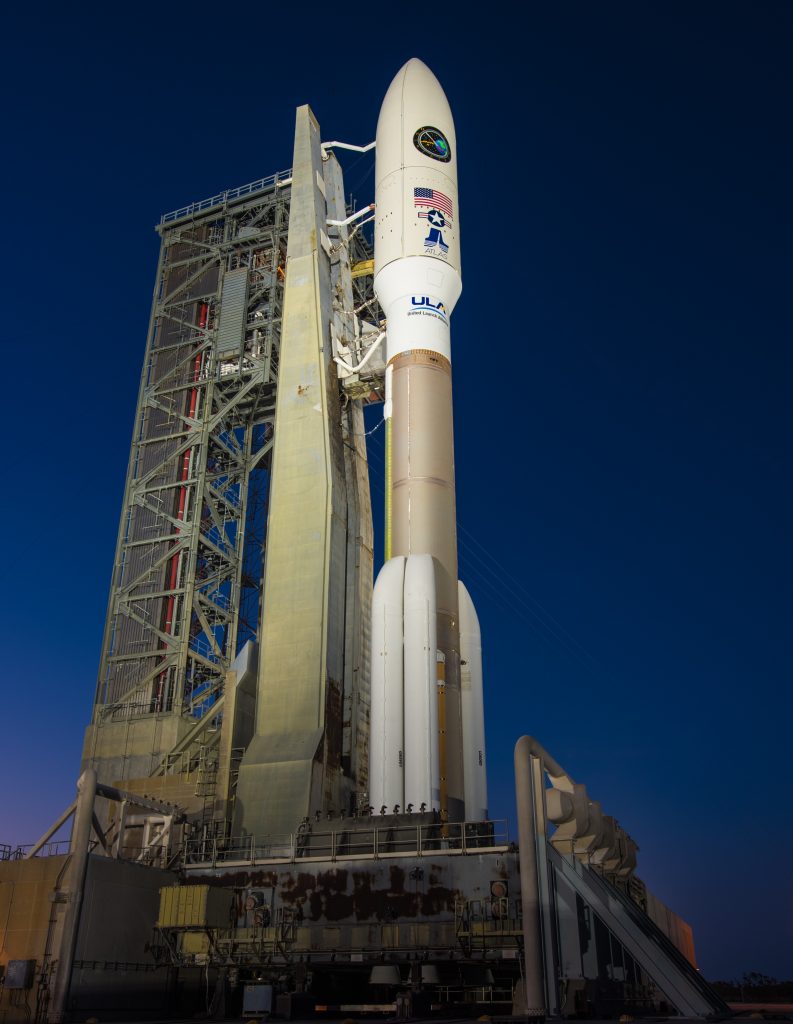
The launch of CBAS and EAGLE required a special breed of rocket, capable of threading a fine line between brute force and precision as a direct-to-GEO injection is among the most complex missions for a launch vehicle – requiring a powerful rocket possessing the performance for injecting a sizeable satellite into an equatorial orbit nearly 36,000 Kilometers in altitude but also counting on the upper stage to remain functional after five hours of battling extreme temperatures and radiation.
Direct-to-GEO missions are a rare occurrence as satellites bound for GEO are typically delivered into an elliptical transfer orbit from where they must circularize their orbits over the equator under their own engine power to reach a point where their velocity is interlocked with that of Earth and keeps them centered over the same location at all times.
Of ULA’s 126 missions performed before Saturday, only around a dozen or so were direct injections into GEO – most of them were for secret government business involving heavily classified satellites operated by the National Reconnaissance Office. In fact, Saturday’s mission was the first not-fully-classified direct GEO injection performed by Atlas V.
>>Atlas V 551 Specifications & Tech Overview
A smooth seven-hour countdown set the stage for Saturday’s liftoff with the sun low in the west at launch time, not a cloud in the sky and Atlas V standing over 60 meters tall atop its Atlantic-side launch pad, weighing in at over 570 metric tons – broken down in 205 t of explosive solid propellant, 305 t of volatile liquid rocket fuels, 58 t of rocket dry mass and only 3.5 t for the two payloads.
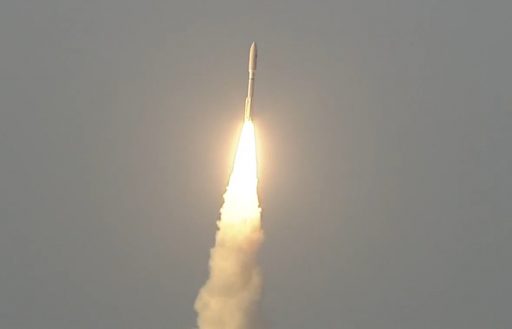
Atlas V came to life at T-2.7 seconds when the Russian-built RD-180 engine started breathing fire and soared to a launch thrust of 390 metric-ton-force. Upon ignition of the five AJ60 Solid Rocket Boosters, Atlas V jumped off its launch pad with a total thrust of 12,200 Kilonewtons, nearly 1,250 metric-ton-force pushing the vehicle up toward clear afternoon skies over Florida’s Space Coast.
The rocket balanced vertically through the help of thrust vector control within the two-chamber main engine and the boosters, starting the process of pitching and rolling onto its due-easterly departure path within four seconds of liftoff. Aligned with an 89.9-degree azimuth, Atlas V crossed the speed of sound at T+35 seconds and the RD-180 throttled back as the vehicle encountered maximum dynamic pressure eleven seconds later.
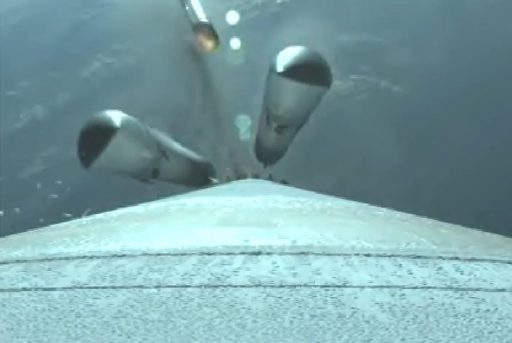
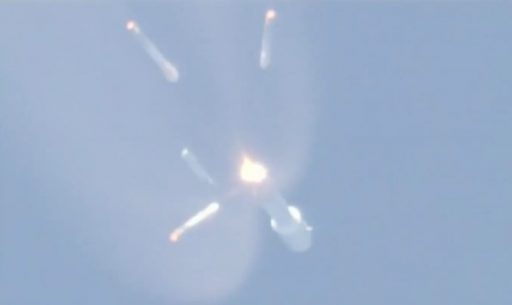
The five boosters, having helped accelerate Atlas V to more than four times the speed of sound, burned out at the T+94 second mark after each consumed 41 metric tons of propellant. Atlas V held them for another 13 seconds after burnout to ensure separation occurred in favorable aerodynamic conditions, dropping the 17-meter long SRBs toward a safe splashdown in the ocean. With the boosters gone, Atlas V continued flying east-south-east under the power of its RD-180 main engine, guzzling down 1,150 Kilograms of rocket-grade Kerosene and Liquid Oxygen every second.
RD-180 was throttled back again for the separation of the 20.7-meter long payload fairing halves three minutes and 31 seconds into the mission when Atlas V had escaped the discernible atmosphere. The Forward Load Reactor around Centaur also dropped away as Atlas V shed no-longer-needed weight before throttling up again to a peak vacuum thrust of 422 metric ton-force.
A gradual reduction of thrust began as the mission passed T+4 minutes and Atlas V had lost the majority of its launch mass, requiring the RD-180 to step off the gas in order to maintain a maximum acceleration of 4.6Gs. BECO – Booster Engine Cutoff was confirmed at T+4 minutes and 34 seconds.
The 32.5-meter long Common Core Booster was discarded by means of pyrotechnic separation devices and retrorockets that pushed it clear of the Centaur upper stage and its RL-10C engine. Ten seconds after staging, Centaur fired up its Hydrogen-fueled engine to push the stack into orbit with a thrust of 10,400 Kilogram-force. The mission entered a deliberate news blackout at this point, though the planned events of the night’s mission were provided beforehand:
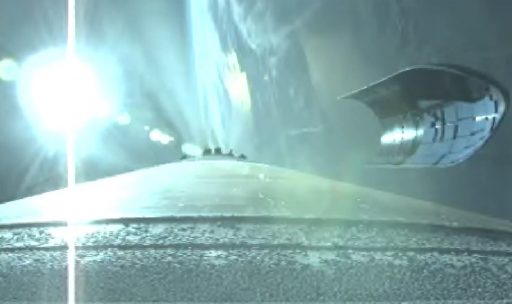
Centaur’s initial burn was planned to last six minutes and one second to place the stack in a Low Earth Parking Orbit for just 12 minutes of coasting – designed to allow Centaur to traverse the Atlantic and conduct its second burn centering the equator so that the high point of the resulting elliptical orbit would the positioned over the equator on the opposite side of the planet. The RL-10 was to re-start at T+22 minutes and 57 seconds on a five-minute and 49-second burn tasked with raising the orbit’s apogee to over 35,000 Kilometers and shaving a few degrees off its inclination.
Upon completion of the second burn, Centaur was to settle in for a five-hour coast phase – a quiescent mission phase that appears to be uneventful from an outside perspective but represents the major challenge of a direct-to-GEO mission. Over the course of the lengthy coast, Centaur used tapoff gas from its tanks to keep the cryogenic propellants settled inside the tanks while the Hydrazine reaction control engines fired to manage the vehicle’s body rates and rotate it to even out solar exposure. Added provisions for Centaur’s lengthy climb included extra batteries and Helium pressurization to keep its brains fed with power and the tanks at the proper pressures.
The third burn of the mission was planned at T+5 hours and 34 minutes – expected to last two minutes & 36 seconds and tasked with raising the orbit’s perigee and flatten out the orbital inclination to achieve a perfectly circular orbit above Earth’s equator, drifting relative to the Geostationary Belt.

The two satellites were expected to separate from the Centaur upper stage before T+6 hours and 57 minutes – the exact timing was not disclosed to the public due to the semi-classified nature of the AFSPC-11 mission, though separation some 35,300 Kilometers above Borneo would not be visible with conventional means anyway. Mission success was confirmed by ULA and the U.S. Air Force before CBAS and EAGLE headed into obscurity to carry out their missions out of public view.
Saturday’s mission marked the third Atlas V launch of 2018. The next mission of the workhorse launcher is set for May 5 from Vandenberg, California with NASA’s InSight lander headed to Mars for a comprehensive study of the planet’s interior. The next east coast Atlas V is not planned until late August when Boeing’s Starliner crew spacecraft is scheduled to conduct its first test flight – a date that can be considered tentative at best.

